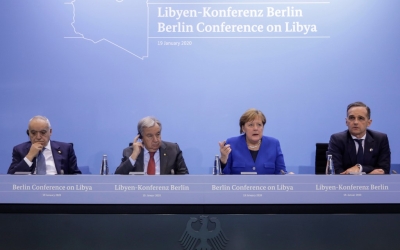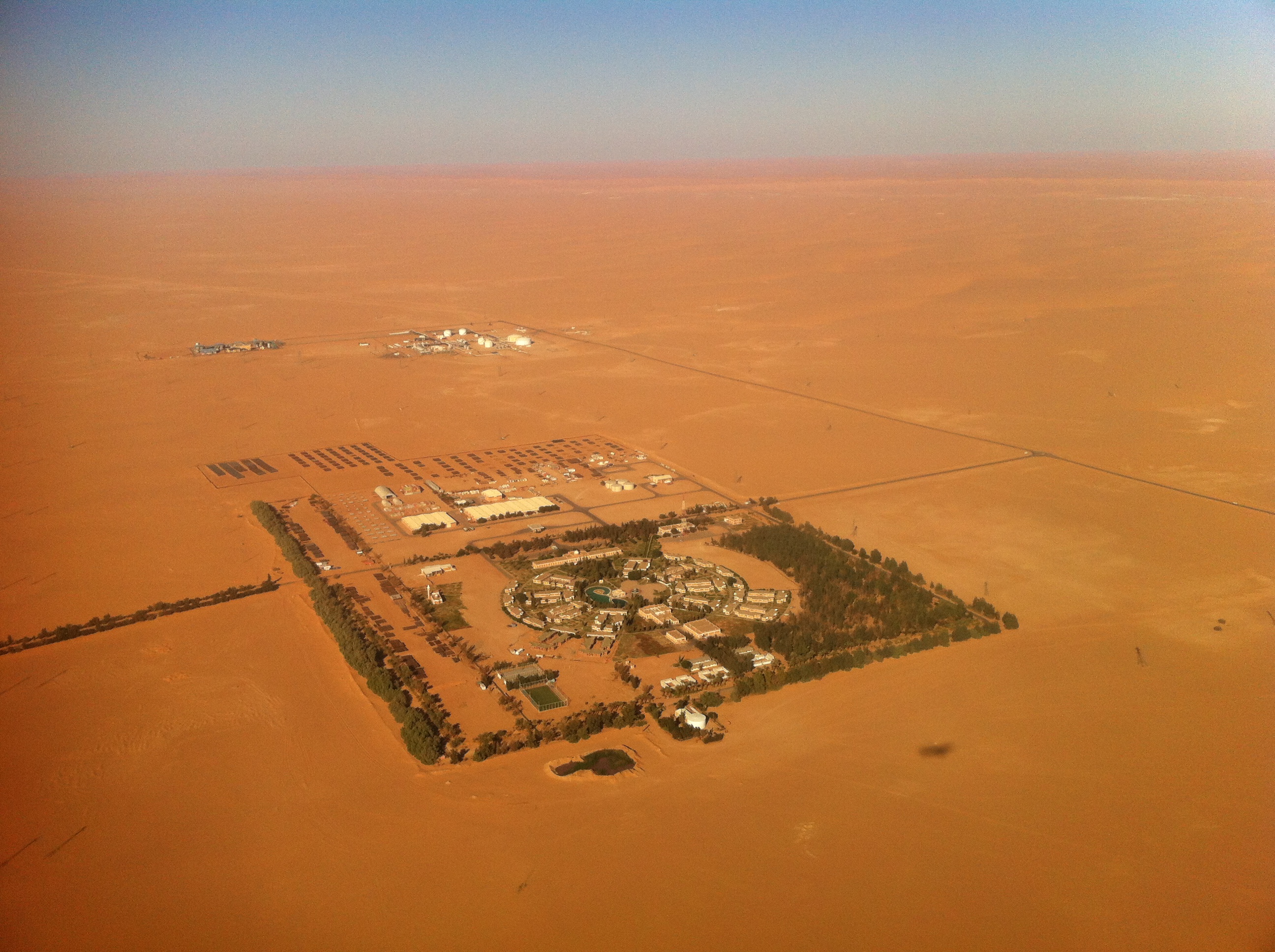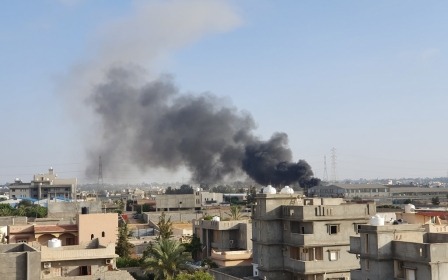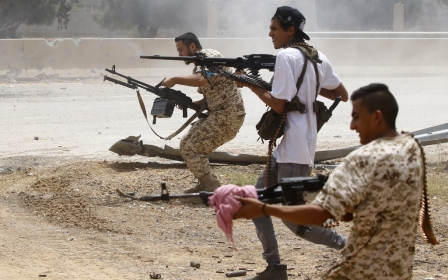Libya crisis: How Haftar is quietly building forces in the Fezzan
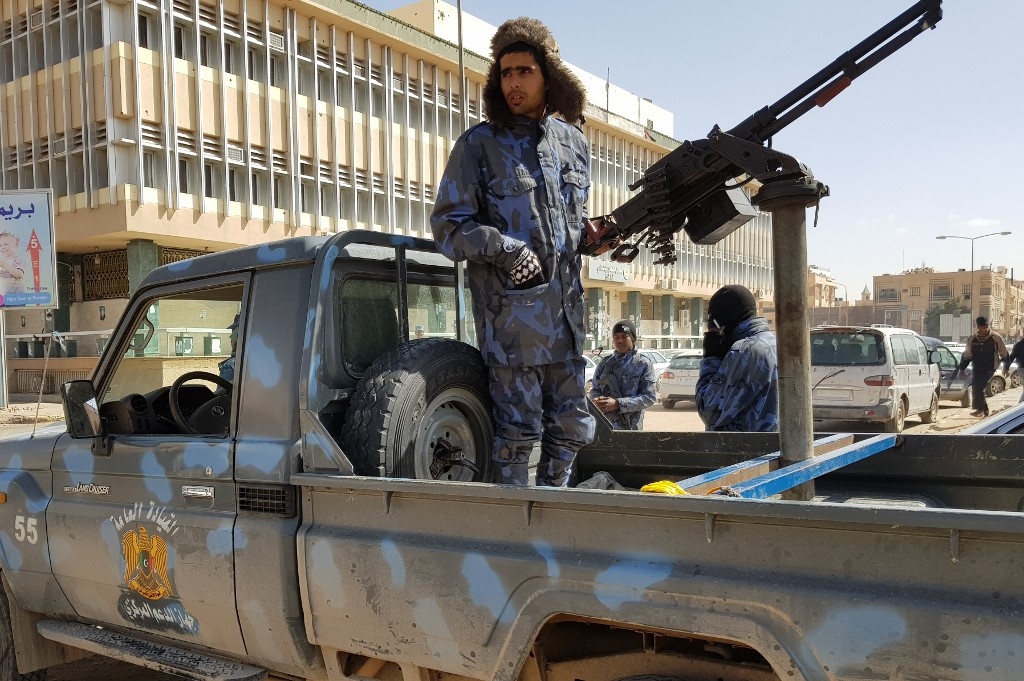
A year ago, Field Marshal Khalifa Haftar launched an offensive on Tripoli in a bid to oust Libya’s Government of National Accord (GNA) and its armed allies, ushering in a phase of unprecedented violence.
The siege of Tripoli by Haftar’s Libyan Arab Armed Forces (LAAF) continues, remaining the almost exclusive focus of reporting. The Fezzan, Libya’s long-neglected and haphazardly governed southwest, is often seen as a side stage to national conflict dynamics.
Yet, developments there have been of major relevance to the escalation in Tripoli, offering clues about the LAAF’s broader expansion strategy. Comprising roughly a third of Libya’s territory, the Fezzan is also a key asset for warring camps. It holds some of the country’s largest oil and water reserves and is Libya’s gateway to the Sahelo-Saharan zone.
Striking a chord
In a strategic move, Haftar deployed LAAF contingents from the eastern and central region in early 2019, ostensibly targeting “outlaws and foreign armed groups”. The narrative struck a chord among southerners tired of rampant crime and patchy security provision, at a time of overall dissatisfaction with the GNA. Many thus welcomed the arrival of LAAF forces.
New MEE newsletter: Jerusalem Dispatch
Sign up to get the latest insights and analysis on Israel-Palestine, alongside Turkey Unpacked and other MEE newsletters
The operation was successful in large part due to the LAAF’s gradual penetration of the Fezzan’s security scene over the previous two years. Using tribal politics to his advantage, Haftar had built relationships with certain social leaders and helped them enhance their influence within their communities.
The momentum created by the LAAF’s rapid advances and accompanying propaganda machine led more southern commanders to side with Haftar
As a consequence, he could count on a number of local armed groups in advance of his move and capitalise on the southern army officers' frustrations with the GNA’s lack of leadership and support.
The momentum created by the LAAF’s rapid advances and accompanying propaganda machine led more southern commanders to side with Haftar, as a way to salvage their position or monetise their endorsement.
The GNA scrambled to organise a counter-offensive, relying on marginal actors and hurried decisions with insufficient local buy-in.
In March 2019, most LAAF forces abruptly withdrew from the Fezzan, leaving the maintenance of the “new order” to their local allies. As the LAAF directed all its efforts to seizing the capital, the Fezzan shifted out of focus again.
By this point, it was clear that the Fezzan operation had served as a launchpad for the subsequent Tripoli offensive, bolstering the LAAF’s image and supplying new manpower.
In the Fezzan, stability remained elusive, as local militias reappeared on the streets and smuggling resumed. Ethnic tensions, which had been exacerbated by the LAAF’s entry into Murzuq, escalated into full-blown conflict.
Restructuring the security landscape
But there appears to be more to Haftar’s Fezzan strategy than a short-sighted power play. A closer look suggests he embarked on restructuring the security landscape in view of consolidating the LAAF’s presence throughout the south.
Southern armed groups typically derive their legitimacy from their tribal backbone and how embedded they are within their communities. The LAAF leadership has been reshaping these groups based on wartime priorities and to weaken parallel loyalties.
Small units are being absorbed into larger battalions that the LAAF has built up as privileged partners. Fighters have also been recruited as individuals, wresting them from their previous formations and reshuffling them in a way that breaks with conventional patterns of mobilisation. Though impacted by southern power dynamics, this restructuring process is essentially led from above.
Meanwhile, Haftar has invested in military structures that have been largely dysfunctional since 2011, giving leeway to trusted army officers.
A Gaddafi-era intelligence official and Haftar’s military governor of Kufra in the southeast, Major-General Belgasem Labaaj, is now in charge of all southern military zones. He has been touring the Fezzan since last autumn, strengthening ties with army cadres on the ground, admonishing corrupt local officials, and trying to broker a peace agreement in Murzuq.
Signs of dissatisfaction
In parallel to the LAAF’s military track, affiliated political authorities have stepped up their role. The interim government authorised fuel deliveries to the Fezzan, which has been starved of its usual western Libyan supply because of the war and the GNA cutting off LAAF-controlled areas.
Southern banks are being supplied with cash from the east, supplementing deliveries from the Central Bank in Tripoli. After initially objecting to municipal elections held under the GNA’s auspices last year, the interim government recently announced substantial budgets for southern municipalities - expecting local officials to distance themselves from the GNA.
The interim government has also been training and equipping auxiliary police forces under its interior ministry.
Signs of dissatisfaction are surfacing, however, and persistent crises may erode popular support for the pro-LAAF camp. A quarrel between the interim government and southern MPs about money for the south that went missing has caused outrage.
In a recent social media outburst, the frontman of the Fezzan Anger Movement - a grassroots network with a broad support base - spilled his anger about the “absent” interim government “that serves the east only”, as well as the “liar” Fayez al-Serraj, referencing a one-billion-dinar development fund that the GNA prime minister promised in December 2018 but never delivered.
Most southerners still have no access to subsidised fuel, since the eastern distribution network is overburdened, the east barely has enough to cover its own demand, and thus continue paying exorbitant black-market prices.
Since the start of 2020, the LAAF has taken new measures to contain the black market, but systemic corruption and the smugglers’ social protection limit their impact.
Far-ranging repercussions
The LAAF’s Fezzan expansion is a double-edged sword. Southerners expect the stronger leadership to enhance security and rein in armed groups. At the same time, LAAF patronage enables approved groups to act with greater impunity and to further their own interests.
The relationship between the LAAF leadership and its tribal backers is not one-directional, but based on mutual benefits and tradeoffs. This has potentially far-ranging societal repercussions, in terms of tribes, or tribal branches, seeking to further their territorial and political influence at the expense of their neighbours.
There are fears that the LAAF’s reinstatement of Gaddafi-era security officials could come at the cost of sustaining structural discrimination toward non-Arab ethnicities and reviving former mechanisms of social control. The southern fighters’ return from the northern frontlines will likely inflame tensions.
There are fears that the LAAF’s reinstatement of Gaddafi-era security officials could come at the cost of sustaining structural discrimination toward non-Arab ethnicities
Through its actions in the Fezzan, and previously in the east, the LAAF has demonstrated skill in navigating the local landscape, reactivating dormant networks and coopting aggrieved constituencies.
This holds clues to how it will pursue the recruitment of more groups in the northwest to aid its takeover. Yet, these trends are contingent on the trajectory of the conflict.
According to local sources, many southern actors sided with the LAAF because under the circumstances, they saw Haftar as being in the pole position to dominate the country.
But Turkey’s entry into the war strengthened the GNA’s position, and if Haftar is forced to back off from Tripoli, he may well lose ground in the Fezzan, too. Tribal support can be retracted and pro-LAAF figureheads can be replaced.
If the LAAF consolidates its territorial gains, the broader question is whether the ongoing restructuring and realignment processes can pave the way for deeper security sector reform. The national sense of purpose that the LAAF claims to embody is often praised as an antidote to the narrow tribal and localist interests driving conflict in Libya.
Yet, the LAAF’s hybrid nature and reliance on a broad range of actors with varying agendas constitute an obstacle to professionalising forces under centralised command.
This article draws on field research that the author conducted for a recently released Chatham House paper on the development of Libyan armed groups since 2014.
The views expressed in this article belong to the author and do not necessarily reflect the editorial policy of Middle East Eye.
This article is available in French on Middle East Eye French edition.
Middle East Eye delivers independent and unrivalled coverage and analysis of the Middle East, North Africa and beyond. To learn more about republishing this content and the associated fees, please fill out this form. More about MEE can be found here.




